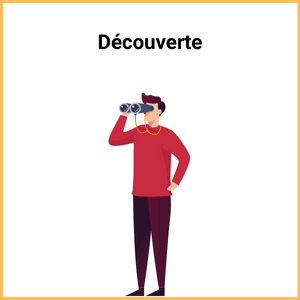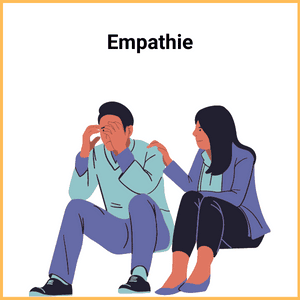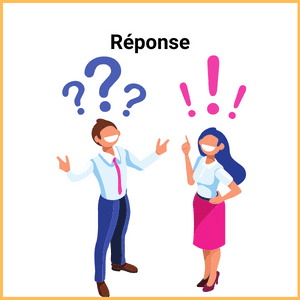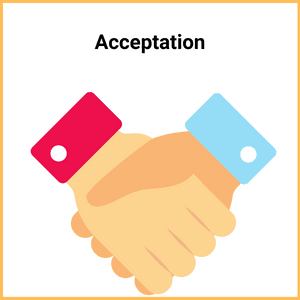The ADERA method, or how to deal with "no" and objections?
The word “no” can be a tough pill to swallow.
In sales, when you’re trying to close a deal, the word “no” is too often misinterpreted. Is it a principled no? A hidden excuse?
Worse still, some salespeople see most objections as a call to battle: they launch into various attempts to try and change the contact person’s mind. An attitude which can have consequences for the relationship with the prospect… and the reputation of their company or the companies they represent.
So what should you do? Abandon the sale at the first objection, or continue to insist, at the risk of upsetting your prospect?
The answer then seems more obvious: if you don’t want to give up on a sale at the first refusal, then you need to know how to deal with your prospect’s objections correctly, with the right attitude and the right arguments. This is where the ADERA method comes in.
Definition of the ADERA method, THE method for responding to objections
The ADERA method is an approach that allows you to respond to objections by understanding them and answering point by point in order to understand the buyer’s point of view.
ADERA stands for Acceptance, Discovery, Empathy, Response and Acceptance. It’s a genuine technique for responding to sales objections, a method for handling objections.
The principle of the ADERA method is not to see a sales objection as a bad thing. It’s obvious that your prospects (and even your customers) will always have things to say about your product and/or service, even if they’re excellent. It’s even a sign of interest on the part of your contact person.
In short, the ADERA method is :
- Accept: accept your customer’s objection,
- Discovery: understand the concern, the reason behind this objection,
- Empathy: humanize your exchange,
- Answers: provide solutions, arguments and concrete evidence,
- Acceptance: check whether your customer has accepted your arguments, whether he’s convinced or not.
1/ Acceptance: knowing how to accept objections
Many objections hide underlying problems that the buyer can’t or isn’t ready to articulate. Often, the real problem isn’t what the buyer tells you first. It’s your job to get to the heart of the objection, to understand it and its true source.
You need to accept that these objections may be real, so that you can better deal with them.
Some practical advice & examples of acceptance :
- Let your contact person express himself: it’s easy, just listen (and show that you’re listening), and take notes if you need to.
- Don’t interrupt,
- Don’t be brazen, ready to draw out a counter-argument as soon as he’s finished speaking.
2/ Discovery: better understand your prospect
Really understand the problem. To do this, ask the buyer’s permission to understand and explore the problem. From there, rephrase the concern as you understand it. Sometimes, when you rephrase the objection, the buyer sees the problem in more detail, and you get closer to the real source of the objection.
Some practical tips & examples for the discovery stage:
- If there’s still any grey area, keep asking “What else?”, “Why?” or other clarifying questions. Often, it’s the answer to this last question that contains the biggest sales objection you need to overcome to move the sale forward.
Better understand your customers with the CAP SONCAS method
Complete our CAP SONCAS model sheet to better understand your customers’ buying motivations.
A perfect complement to the ADERA method for refining your sales approach.
Download: template to fill in + method explanation sheets.
3/ Empathy: create a bond with your prospects
Understand your customers’ motivation (what they’re looking for) and make sure it’s something you can give them. Most marketing messages are focused on the product to impress the customer, whereas buyers focus most of their actions on feelings, with logic coming second. That’s why it’s so important to look beyond the product and consider the end result and the emotions involved for the buyer.
Like our customers, we’re not fooled if someone tries to push us to do something. But we can also recognize when someone is trying to help us. When you think about your sales approaches, ask yourself if you’d like to be treated the way youinteract with your customers.
Some practical tips and examples of how to show empathy using the ADERA method:
- Show that you’ve understood his sales objection (particularly useful when your prospect has been talking for a while): “If I’ve understood correctly…”, “If we summarize…”.
- Put yourself in your contact person’s shoes, and if possible (and relevant, even go along with them): “I totally understand that you need to…”, “Absolutely, you need our solution to enable you to…”.
4/ Response: providing concrete solutions
Once you’re sure you’ve uncovered all the objections and reassured your contact person, answer the most important objection first. Once you’ve cleared the biggest hurdle to move forward, other concerns may no longer be as important to the buyer.
You should do your best to solve their problem immediately if possible. The more effectively you can solve problems in real time, the more likely you are to move the sale forward. If you need more information to solve a specific problem, you may need to research something or investigate further.
Some practical tips & examples for the overdraft stage:
- Provide your contact person with the most concrete answers possible: a case study similar to his or her own, customer testimonials, recommendations, figures, demos… It’s up to you to find the most effective way of dispelling their doubts.
- Don’t be afraid of not knowing : although it’s best to respond immediately to objections, sometimes it’s better to take the time to find out before answering. For example, you could adopt the following strategy: “That’s an excellent question. I’ll find out more about it and get back to you shortly.” And of course, since your word is your bond, make sure you can get back to them quickly.
5/ Acceptance: making sure the customer is reassured
This second acceptance phase takes place on the buyer’s side. You need to make sure that all objections have been answered, and that there are no further objections. If you feel that an objection has not been fully answered, you can repeat the ADERA method, or come back to your prospect later to provide a solution.
Ask your contact person clearly: “Have I answered your question?”
Now you know how to respond to objections! Now it’s your turn! 😉






